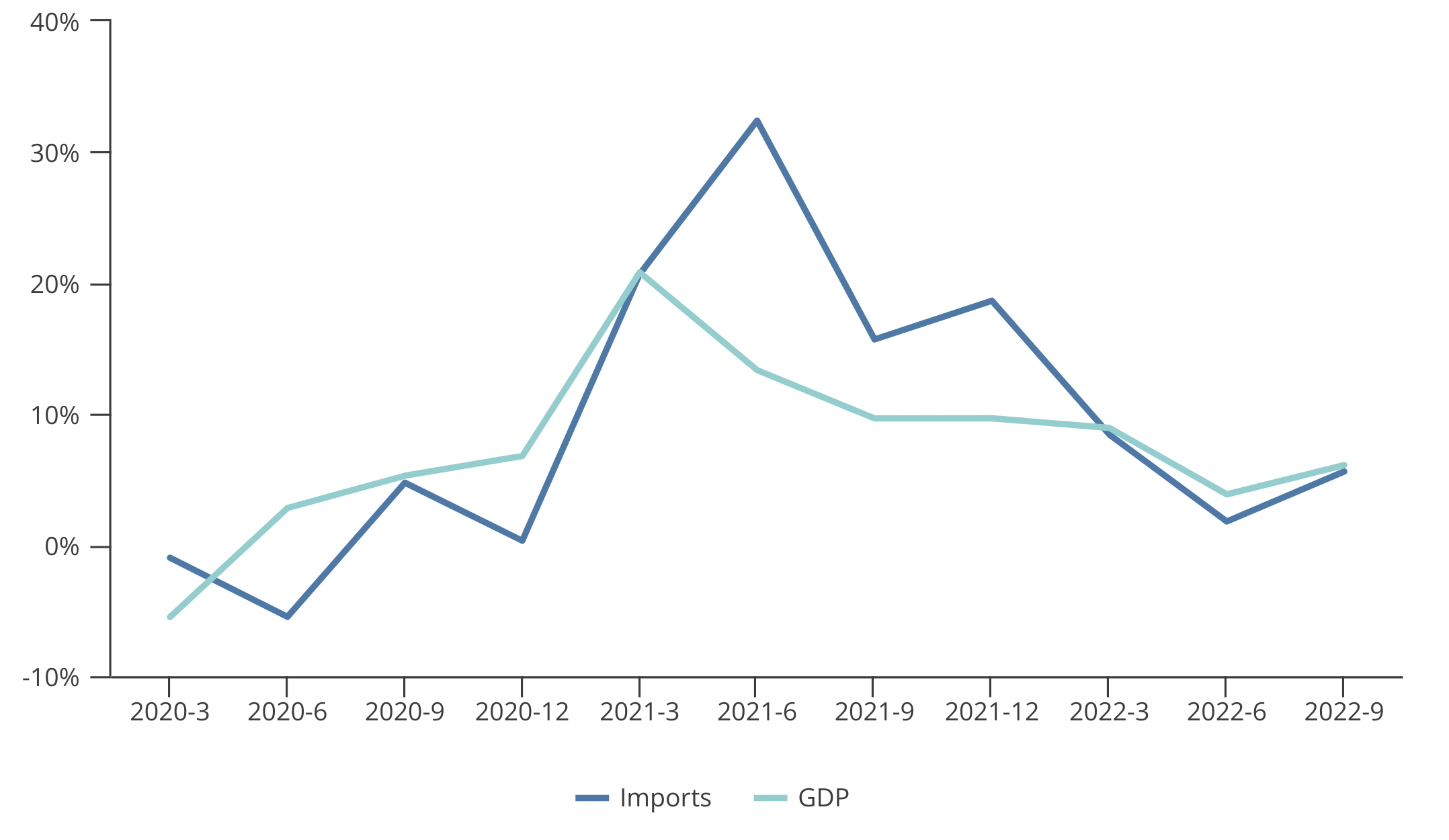- November 29, 2022 Economy
China’s Giant Trade Surplus Isn’t a Sign of Economic Strength
For those looking for a bright spot in the Chinese economy, trade is the most obvious. China is on its way to a record trade surplus that is expected to top $700 billion in 2022, all the while improving its trade balance with most advanced economies. For example, it has turned a large trade deficit with Germany into a surplus this year.
But the unusually large trade surplus is not so much the result of phenomenal export growth. A closer look at the numbers shows that China’s export growth (12% in 2Q) has actually lagged the global average (17% in 2Q), according to the World Trade Organization. This is true for both overall exports and the export of electronics and machinery (just 7% growth through October), which is a proxy for the prowess of Chinese manufacturing.
Instead, the large trade surplus can be attributed to weak imports, which rose a mere $77 billion through October, just about 15% of the import increase up to the same point in 2021. And all the import growth in 2022 has come from energy—not counting oil and gas, China’s total imports actually contracted by $36 billion through October.
Some analysts have proffered “import substitution” as an explanation for the less-than-stellar import performance. For example, they point to what has been a banner year in auto trade that turned a $16 billion deficit in 2021 into a $1 billion surplus in 2022—implying that the country has succeeded in indigenizing the auto industry. While China’s auto sector, particularly electric vehicles, has increased its international competitiveness, that doesn’t really explain China’s elevated trade surplus. That’s because auto exports account for <1% of the more than $200 billion increase in the trade surplus this year.
Broadly speaking, import substitution is a gradual process that will be reflected in the trade picture accordingly. But the recent contraction in import growth is anything but gradual. Imports were still growing at double digits in March 2022, but abruptly fell off a cliff in 2Q2022 around the time of Shanghai’s Covid lockdown. Moreover, China is still importing more semiconductors, suggesting that progress on import substitution is slow and challenging.
Figure 1. Growth of Chinese Imports Highly Correlated with Nominal GDP Growth (%, yoy)
Source: Wind.
The simplest answer for the collapse of imports is weak domestic demand, given that import growth has been highly correlated with GDP growth recently (see Figure 1). But even if the Zero-Covid policy were abandoned tomorrow and the economy recovers, expectations should be tempered about how much imports will rebound.
Three factors suggest that China may run persistently large trade surpluses in coming years. First, economic growth will be dialed back as Beijing no longer prioritizes high growth, which will lead to lower imports overall. Second, the focus on an income redistribution agenda (i.e. common prosperity) will not work in imports’ favor. Intended to reduce inequality, common prosperity in practice likely means redistributing money from wealthier Chinese households that can afford more expensive foreign brands (e.g. Apple and BMW). That process could lead households to switch to cheaper domestic substitutes like Huawei and BYD. Third, although import substitution is slow, Beijing appears determined to make progress on it in a bid to secure domestic supply chains. It goes without saying that the more Beijing materially succeeds on import substitution, the fewer foreign inputs it will import.
The top leadership’s prioritization of “security” over “growth” means that it will likely pursue policies that rely more on the home front while continuing to make Chinese exports ever more competitive. While that may secure the home front, it is simultaneously creating a recipe for tensions on the foreign front because it’s an agenda that tends to maximize exports at the expense of foreign imports.
Houze Song is a fellow at MacroPolo. You can find his work on the economy, local finance, and other topics here.
Stay Updated with MacroPolo
Get on our mailing list to keep up with our analysis and new products.
Subscribe
